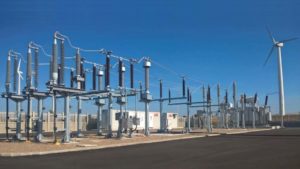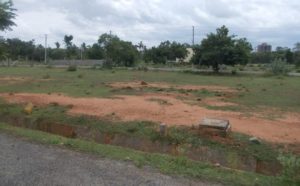Substation layout design consideration
Today, we’ll be looking at factors needed to be considered before going ahead to design a substation. However, before going into that; it will be unwise if we don’t define a substation.
Substations are the points in the power network where transmission lines and distribution feeders are connected together through circuit breakers or switches via busbars and transformers. This allows for the control of power flow in the network and general switching operations for maintenance purposes. In setting out the layout of a substation, a lot of factors are considered. These are what we are going to be looking at in substation layout design considerations.
Substation layout design consideration
We must bear in mind that a substation is a meeting point between power lines which are usually at different voltage levels with associated equipment that actually couples these lines safely and with little or no mismatch. With no further ado, Things to consider are:
1. Land area
The cost of purchasing a plot of land in a densely populated area is considerably high.
Therefore, there is a trend towards compact substation design.
This is made possible by the use of indoor gas-insulated switchgear (GIS) substation designs or by using such configurations as the transformer feeder substation layout.
In addition, compact design reduces civil work activities (site preparation, building costs, requirements for concrete cable trenches, surfacing and access roads).
Long multicore control cable runs and switchyard earth grid requirements are also reduced.
The reduction in site work by using compact layouts and in particular by using modular elements results in overall shorter substation project design and construction duration to the advantage of the client.
2. Cost
Satisfactory cost comparison between different substation layout designs is extremely difficult because of the differences in performances and maintainability.
It is preferable to base a decision for a particular layout on technical grounds.
Then, determine the most economic means of achieving these technical requirements.
3. Reliability of supply:
This means that the arrangement of equipment (layout) must be such that the electric power supply is guaranteed for as long as possible.
This means that a fault at any point in the substation circuit must not result in the complete shut down of the entire substation.
In order to achieve this, most of the protective devices is usually duplicated to act as back up protection for any of the devices that fail.
Though it is not possible to avoid outages in the entire power system, it is possible to ensure a steady supply of power through the use of single bus bar with bus section scheme, double bus bar scheme, etc.
4. Extendibility
The design should allow for future extendibility.
Due to the fact that demand for power might increase, it is paramount to provide space for extension during design.
This will help supply match demand for power when/if the need arises.
Where a future extension is likely to involve major changes {such as from a single to double busbar arrangement} then it is best to install the final arrangement at the outset because of the disruption that will be involved later.
Failure to consider extendibility will result in building a fresh substation when demand eventually beat supply.
5. Maintainability
The design must take into account the electricity supply company (e.g BEDC) system planning and operations procedures together with a knowledge of reliability and maintenance requirements for the proposed substation equipment.
In a similar way, the layout must allow easy access of winching gear, mobile cranes or other lifting devices if maintenance downtimes are to be kept to a minimum.
Similarly, standard minimum clearances must be maintained for safe working access to equipment adjacent to operational live switchgear circuits or switchgear bays.
Bear in mind that some safety authorities now resist the use of ladder work.
Therefore, easy access for mobile working platforms and scaffolding is required.
In summary, maintainability demands that space should be provided for the movement of equipment needed for maintenance.
6. Operational flexibility
The physical layout of individual circuit and group of circuits must permit the required power flow control.
It is mostly carried out with a two transformer substation operation.
Here, the goal is to avoid loss of service when switching from one transformer to another or feeding with both.
7. Protection arrangement
The design must allow for multiple busbar arrangement.
This will provide greater flexibility than a ring bus bar.
This will provide greater flexibility than a ring bus bar.
The protection of each system element by the provision of suitable CT locations to ensure overlapping of protection zones should be considered.
Along with the number of circuit breakers that are required to be tripped following a fault, the auto-reclose arrangement.
Lastly, the type of protection, extent and type of mechanical and electrical interlocking must be considered too.
8. Short circuit limitation
In order to keep fault levels down, parallel connections (transformers or power sources feeding the substation) should be avoided.
Multi busbar arrangement with sectioning facilities allows the system to be split or connected through a fault limiting reactor.
It is also possible to split a system using circuit breaker in a mesh or ring-type substation layout.
Although, this requires careful planning and operational procedures.


Leave a Reply